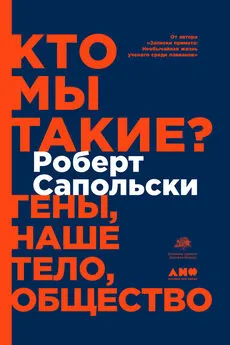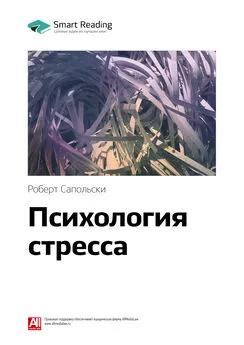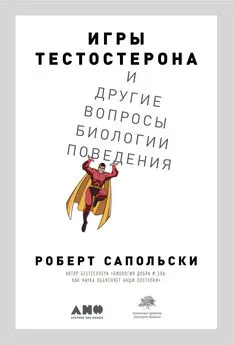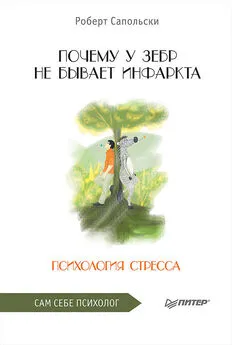Роберт Сапольски - Биология добра и зла. Как наука объясняет наши поступки
- Название:Биология добра и зла. Как наука объясняет наши поступки
- Автор:
- Жанр:
- Издательство:Альпина нон-фикшн
- Год:2019
- Город:Москва
- ISBN:978-5-0013-9051-0
- Рейтинг:
- Избранное:Добавить в избранное
-
Отзывы:
-
Ваша оценка:
Роберт Сапольски - Биология добра и зла. Как наука объясняет наши поступки краткое содержание
Биология добра и зла. Как наука объясняет наши поступки - читать онлайн бесплатно ознакомительный отрывок
Интервал:
Закладка:
J. Greene et al., “An fMRI Investigation of Emotional Engagement in Moral Judgment,” Sci 293 (2001): 2105; J. Greene et al., “The Neural Bases of Cognitive Conflict and Control in Moral Judgment,” Neuron 44 (2004): 389; J. Greene, Moral Tribes: Emotion, Reason and the Gap Between Us and Them (New York: Penguin, 2014).
791
D. Ariely, Predictably Irrational: The Hidden Forces That Shape Our Decisions (New York: Harper Perennial, 2010).
792
P. Singer, “Famine, Affluence, and Morality,” Philosophy and Public Affairs 1 (1972) 229.
793
D. A. Smalia et al., “Sympathy and Callousness: The Impact of Deliberative Thought on Donations to Identifiable and Statistical Victims,” Organizational Behav and Hum Decision Processes 102 (2007): 143; L. Petrinovich и P. O’Neill, “Influence of Wording and Framing Effects on Moral Intuitions,” Ethology and Sociobiology 17 (1996): 145; L. Petrinovich et al., “An Empirical Study of Moral Intuitions: Toward an Evolutionary Ethics,” JPSP 64 (1993): 467; R. E. O’Hara et al., “Wording Effects in Moral Judgments,” Judgment and Decision Making 5 (2010): 547.
794
A. Cohn et al., “Business Culture and Dishonesty in the Banking Industry,” Nat 516 (2014): 86. См. также M. Villeval, “Professional Identity Can Increase Dishonesty,” Nat 516 (2014): 48.
795
R. Zahn et al., “The Neural Basis of Human Social Values: Evidence from Functional MRI,” Cerebral Cortex 19 (2009): 276.
796
K. Starcke et al., “Does Stress Alter Everyday Moral Decision-Making?” PNE 36 (2011): 210; F. Youssef et al., “Stress Alters Personal Moral Decision Making,” PNE 37 (2012): 491.
797
E. Pronin, “How We See Ourselves and How We See Others,” Sci 320 (2008): 1177.
798
R. M. N. Shweder et al., “The ‘Big Three’ of Morality and the ‘Big Three’ Explanations of Suffering,” in Morality and Health , ed. A. M. B. P. Rozin (Oxford: Routledge, 1997).
799
M. Shermer, The Science of Good and Evil (New York: Holt, 2004).
800
F. W. Marlowe et al., “More ‘Altruistic’ Punishment in Larger Societies,” Sci 23 (2006): 1767; J. Henrich et al., “‘Economic Man’ in Cross-Cultural Perspective: Behavioral Experiments in 15 Small-Scale Societies,” BBS 28 (2005): 795.
801
R. Benedict, The Chrysanthemum and the Sword (Nanjing, China: Yilin Press1946); H. Katchadourian, Guilt: The Bite of Conscience (Palo Alto, CA: Stanford General Books, 2011); J. Jacquet, Is Shame Necessary? New Uses for an Old Tool (New York: Pantheon, 2015).
802
C. Berthelsen, “College Football: 9 Enter Pleas in U.C.L.A. Parking Case,” New York Times , July 29, 1999, www.nytimes.com/1999/07/29/sports/college-football-9-enter-pleas-in-ucla-parking-case.html.
803
J. Bakan, The Corporation: The Pathological Pursuit of Profit and Power (New York: Simon & Schuster 2005).
804
Greene, Moral Tribes .
805
D. G. Rand et al., “Spontaneous Giving and Calculated Greed,” Nat 489 (2012): 427.
806
S. Bowles, “Policies Designed to Self-Interested Citizens May Undermine ‘The Moral Sentiments’: Evidence from Economic Experiments,” Sci 320 (2008): 1605; E. Fehr and B. Rockenbach, “Detrimental Effects of Sanctions on Human Altruism,” Nat 422 (2003): 137.
807
M. M. Littlefield et al., “Being Asked to Tell an Unpleasant Truth About Another Person Activates Anterior Insula and Medial Prefrontal Cortex,” Front Hum Nsci 9 (2015): 553; К сноске: S. Harris, Lying . Four Elephants Press, 2013. Электронная книга.
808
По поводу обмана животными см: B. C. Wheeler, “Monkeys Crying Wolf? Tufted Capuchin Monkeys Use Anti-predator Calls to Usurp Resources from Conspecifics,” Proc Royal Soc B Biol Sci 276 (2009): 3013; F. Amici et al., “Variation in Withholding of Information in Three Monkey Species,” Proc Royal Soc B Biol Sci 276 (2009): 3311; A. le Roux et al., “Evidence for Tactical Concealment in a Wild Primate,” Nat Communications 4 (2013): 1462; A. Whiten and R. W. Byrne, “Tactical Deception in Primates,” BBS 11 (1988): 233; F. de Waal, Chimpanzee Politics: Power and Sex Among Apes (Baltimore, MD: Johns Hopkins University Press, 1982); G. Woodruff and D. Premack, “Intentional Communication in the Chimpanzee: The Development of Deception,” Cog 7 (1979): 333; R. W. Byrne and N. Corp, “Neocortex Size Predicts Deception Rate in Primates,” Proc Royal Soc B Biol Sci 271 (2004): 693; C. A. Ristau, “Language, Cognition, and Awareness in Animals?” ANYAS 406 (1983): 170; T. Bugnyar and K. Kotrschal, “Observational Learning and the Raiding of Food Caches in Ravens, Corvus corax : Is It ‘Tactical’ Deception?” Animal Behav 64 (2002): 185; J. Bro-Jorgensen and W. M. Pangle, “Male Topi Antelopes Alarm Snort Deceptively to Retain Females for Mating,” Am Nat 176 (2010): E33; C. Brown et al., “It Pays to Cheat: Tactical Deception in a Cephalopod Social Signalling System,” Biol Lett 8 (2012): 729; T. Flower, “Fork-Tailed Drongos Use Deceptive Mimicked Alarm Calls to Steal Food,” Proc Royal Soc B Biol Sci 278 (2011): 1548.
809
K. G. Volz et al., “The Neural Basis of Deception in Strategic Interactions,” Front Behav Nsci 9 (2015): 27.
810
Y. Yang et al., “Prefrontal White Matter in Pathological Liars,” Br J Psychiatry 187 (2005): 325; Y. Yang et al., “Localisation of Increased Prefrontal White Matter in Pathological Liars,” Br J Psychiatry 190 (2007):174.
811
D. D. Langleben et al., “Telling Truth from Lie in Individual Subjects with Fast Event-Related fMRI,” Hum Brain Mapping 26 (2005): 262; J. M. Nunez et al., “Intentional False Responding Shares Neural Substrates with Response Conflict and Cognitive Control,” Neuroimage 25 (2005): 267; G. Ganis et al., “Neural Correlates of Different Types of Deception: An fMRI Investigation,” Cerebral Cortex 13 (2003): 830; K. L. Phan et al., “Neural Correlates of Telling Lies: A Functional Magnetic Resonance Imaging Study at 4 Tesla,” Academic Radiology 12 (2005): 164; N. Abe et al., “Dissociable Roles of Prefrontal and Anterior Cingulate Cortices in Deception,” Cerebral Cortex 16 (2006): 192; N. Abe, “How the Brain Shapes Deception: An Integrated Review of the Literature,” Neuroscientist 17 (2011): 560.
812
A. Priori et al., “Lie-Specific Involvement of Dorsolateral Prefrontal Cortex in Deception,” Cerebral Cortex 18 (2008): 451; L. Zhu et al., “Damage to Dorsolateral Prefrontal Cortex Affects Tradeoffs Between Honesty and Self-Interest,” Nat Nsci 17 (2014): 1319.
813
T. Baumgartner et al., “The Neural Circuitry of a Broken Promise,” Neuron 64 (2009): 756.
814
К сноске: F. Sellal et al., “‘Pinocchio Syndrome’: A Peculiar Form of Reflex Epilepsy?” J Neurol, Neurosurgery and Psychiatry 56 (1993): 936.
815
J. D. Greene and J. M. Paxton, “Patterns of Neural Activity Associated with Honest and Dishonest Moral Decisions,” PNAS 106 (2009): 12506.
816
L. Pascual et al., “How Does Morality Work in the Brain? A Functional and Structural Perspective of Moral Behavior,” Front Integrative Nsci 7 (2013): 65.
817
D. G. Rand and Z. G., Epstein, “Risking Your Life Without a Second Thought: Intuitive Decision-Making and Extreme Altruism,” PLoS ONE 9, no. 10 (2014): e109687; R. W. Emerson, Essays, First Series: Heroism (1841).
818
На эту тему советую почитать работы ведущих ученых в данной области: D. Keltner et al., The Compassionate Instinct: The Science of Human Goodness (New York: W. W. Norton, 2010); R. Davidson and S. Begley, The Emotional Life of Your Brain (New York: Plume, 2012).
819
G. Hein et al., “The Brain’s Functional Network Architecture Reveals Human Motives,” Sci 351 (2016): 1074. См. также: S. Gluth and L. Fontanesi, “Wiring the Altruistic Brain,” Sci 351 (2016): 1028.
820
A. Whiten et al., “Imitative Learning of Artificial Fruit Processing in Children ( Homo sapiens ) and Chimpanzees ( Pan troglodytes ),” JCP 110 (1996): 3; V. Horner and A. Whiten, “Causal Knowledge and Imitation/Emulation Switching in Chimpanzees ( Pan troglodytes ) and Children ( Homo sapiens ),” Animal Cog 8 (2005): 164.
821
D. Jeon et al., “Observational Fear Learning Involves Affective Pain System and Ca1.2. CA2 Channels in ACC,” Nat Nsci 13 (2010): 482.
822
B. L. Warren et al., “Neurobiological Sequelae of Witnessing Stressful Events in Adult Mice,” BP 73 (2012): 7.
823
D. J. Langford et al., “Social Modulation of Pain as Evidence for Empathy in Mice,” Sci 312 (2006): 1967.
824
M. Tomasello and V. Amrisha, “Origins of Human Cooperation and Morality,” Ann Rev Psych 64 (2013): 231; D. Povinelli et al., review of Reaching into Thought: The Minds of the Great Apes , ed. A. E. Russon et al., TICS 2 (1998): 158.
825
F. de Waal and A. van Roosmalen, “Reconciliation and Consolation Among Chimpanzees,” Behav Ecology and Sociobiology 5 (1979): 55; E. Palagi and G. Cordoni, “Postconflict Third-Party Affiliation in Canis lupus : Do Wolves Share Similarities with the Great Apes?” Animal Behav 78 (2009): 979; A. Cools et al., “Canine Reconciliation and Third-Party-Initiated Postconflict Affiliation: Do Peacemaking Social Mechanisms in Dogs Rival Those of Higher Primates?” Ethology 14 (2008): 53; O. Fraser and T. Bugnyar, “Do Ravens Show Consolation? Responses to Distressed Others,” PLoS ONE 5, no. 5 (2010), doi:10.1371/journal.pone.0010605; A. Seed et al., “Postconflict Third-Party Affiliation in Rooks, Corvus frugilegus ,” Curr Biol 2 (2006): 152; J. Plotnik and F. de Waal, “Asian Elephants ( Elephas maximus ) Reassure Others in Distress,” Peer J 2 (2014), doi:10.7717/ peerj.278; Z. Clay and F. de Waal, “Bonobos Respond to Distress in Others: Consolation Across the Age Spectrum,” PLoS ONE 8 (2013): e55206.
826
J. P. Burkett et al., “Oxytocin-Dependent Consolation Behavior in Rodents,” Sci 351 (2016): 375.
Читать дальшеИнтервал:
Закладка:
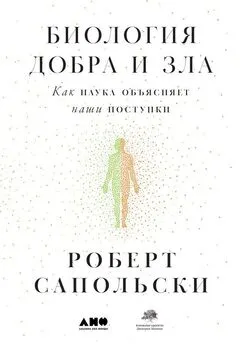




![Роберт Сапольски - Игры тестостерона и другие вопросы биологии поведения [litres]](/books/1074102/robert-sapolski-igry-testosterona-i-drugie-vopros.webp)
